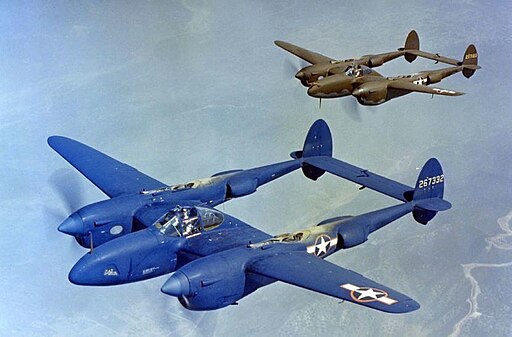Aircraft camouflage has long played a critical role in military operations, striving to conceal these powerful machines amidst the vast expanse of the sky. From the early days of aviation to the modern era of advanced technology, aircraft camouflage has evolved in tandem with the changing demands of warfare. This article from the Air Force Materiel Command History Office explores the fascinating world of aircraft camouflage, delving into its historical significance, challenges faced, and notable advancements made over time.

United States Army Air Forces, Public domain, via Wikimedia Commons
At the heart of aircraft camouflage lies the challenge of visibility. The contrast between an aircraft and its background greatly affects its detectability. Shape, shadow, texture, color, and movement all contribute to an aircraft’s visibility, making it vital to design effective camouflage schemes that adapt to various weather conditions and operational requirements.
Aircraft camouflage involves practical considerations that extend beyond visual concealment. The article acknowledges the trade-offs associated with aircraft painting, where the need for durable paint to withstand weather exposure must be balanced against added weight and improved corrosion resistance. The production costs and logistical challenges of painting large numbers of aircraft during times of conflict are also emphasized.
The article highlights the historical development of aircraft camouflage, particularly within the context of the United States military. It references the adoption of solid color finishes during World War I, primarily to minimize friendly fire incidents. As aviation technology progressed, the shift from fabric-covered to metal-skinned aircraft presented new challenges and opportunities for camouflage experimentation.
Various camouflage schemes employed in different operational theaters are discussed. These schemes range from incorporating colors that blend with the surrounding terrain to utilizing specialized finishes for specific purposes. Notable examples include the application of British Royal Air Force colors in the absence of U.S. supplies and the use of “Haze Paint” for high-altitude reconnaissance aircraft. The article also touches on glossy black finishes employed by night fighters.
With the advent of radar technology, the importance of visual camouflage diminished, as aircraft could now be detected through electronic means. However, the article acknowledges the resurgence of camouflage in later years, particularly during operations in Southeast Asia, where the need to conceal aircraft against jungle terrain reemerged.
Link to the article, hit the Source below